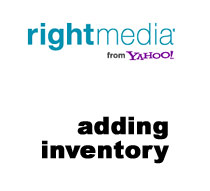 The Yahoo!-Aol-Microsoft deal, which lets each of the partners sell the other’s remnant display ad inventory has born its first fruit. Read the release.
The Yahoo!-Aol-Microsoft deal, which lets each of the partners sell the other’s remnant display ad inventory has born its first fruit. Read the release.
New Right Media Exchange North America chief Brian Silver explained to AdExchanger yesterday that Aol now has a seat on the exchange in order to sell it’s “Class II” remnant ad inventory. It was a deal originally finalized in December as Silver said that no date had been set for the roll-out of Aol inventory on RMX – “It’s entirely up to them along with our guidance.”
Regarding on who gets to buy Aol inventory, Silver played the role of agnostic exchange owner and said the publisher is in complete control: “As a seat holder, they control their inventory of who they choose to do business with. So whether or not they decide to link with Yahoo!, or Demand partner B, C or D, it’s completely up to them. Or even if they decide to monetize it themselves. They could find some yield in their own ads running across their inventory that’s sitting there, which a lot of our partners do as well. So, they just use our tools and mechanisms around that.”
Aol appears to have made a choice of Yahoo!’s RMX instead of AppNexus and the Microsoft Ad Exchange. But, it’s likely not that cut and dry in terms of deciding which was the best tech or service for Aol inventory. Yahoo! has always seemed to be driving the bus in this still-strategizing, triumverate.
Of interest to Aol’s ad network is the ability to continue to buy Yahoo! O&O through Right Media as ad networks and demand-side platforms are rejected by the Yahoo! mothership on RMX. What’s unclear is how much Ad.com, the buyer, has to expose in terms of its advertisers on RMX who buy Yahoo! inventory. If it wants to keep buying the high-performing Yahoo! inventory, perhaps it needed to have Aol ante up with some Aol inventory for the exchange.
Also, certain types of advertisers (big CPG companies, for example) available through Right Media Exchange might be attractive to Aol the publisher. And finally, another reason for Aol to choose RMX is there are always strategic objectives that Aol CEO Tim Armstrong may be considering – as in the long-rumored merger of Yahoo! and Aol.
Regarding any update on the decision by Yahoo! to boot demand-side platforms from buying Yahoo! O&O inventory on Right Media Exchange, Silver declined to comment on what he says was “a Yahoo! policy not a Right Media policy.”
In response to a query from AdExchanger, Aol’s David Jacobs provided a statement on the implications of the announcement:
“We selected RMX to quickly activate the previously announced partnership. Although we have long standing partnerships with both RMX and Appnexus, we did find RMX would suit our near term needs.
AOL will continue to build on the strength of our strong past year to look to Advertising.com to monetize the majority of AOL’s non- reserved inventory. The announcement today will simply open up AOL supply on a non-reserved basis thru RTB to Yahoo and MSFT direct sold advertisers.
Advertising.com will continue to be large partners with Yahoo and Microsoft.”
Of note above, Aol’s Right Media seat will only be selling to Yahoo! and Microsoft directs as had been suggested previously. But, Ad.com appears to still get “first look.” Yahoo!’s interclick may be waiting at the gates when the new Aol inventory pours in. Nevertheless, publicly, outstanding issues remain around data and what can and can’t be captured by any of the alliance partners.
From here, the triumverate will likely throw “caution to the wind” and let ‘er rip in terms of selling their remnant inventory to each other. Given “let ‘er rip”, Yahoo-Microsoft-Aol is banking on the value of so-called “premium” inventory, at-scale with audience in “brand-safe” environments. With the gobs of inventory out there besides their own – including “brand safe” – can they really make it work? It will come down to the scale of daily uniques each can provide (especially Yahoo!) as brands love that reach, and the proprietary data that they all can supply advertisers to drive efficient campaigns. Anonymous email data may be a good start. On the other side of the fence will be Google which will take its new universal privacy policy and the benefits of a universal login to steadily feed the algorithm for Invite Media and DoubleClick For Advertisers which theoretically drives prices higher for publishers as advertisers more efficiently buy and, hopefully, bid higher for the right audience.
Marketers will vote with their dollars in the end. This is going to take a while to play out.
UPDATE #1: I’m told by a source that the part about the data strategy suggestion that I characterized above (let ‘er rip) isn’t accurate and that they all sign an agreement not to reuse each other’s data – these are public companies and to violate those terms would be a serious issue.
By John Ebbert












